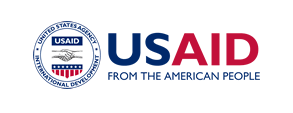The Health Policy Project ended in 2016. Work continued under Health Policy Plus (HP+) until 2022.
NEWS & VIEWS
.jpg)
Photo by Clara Sanchiz
April 30, 2015
NAIROBI—Today, the USAID- and PEPFAR-funded Health Policy Project (HPP) released a report detailing the costs behind the Kenya Health Sector Strategic and Investment Plan, June 2014–July 2018 (KHSSP III). The KHSSP III is the primary document guiding the development of Kenya’s health sector and the allocation of health resources through 2018.
From 2013 to 2014, HPP provided assistance to Kenya’s Ministry of Health (MOH) to determine resource needs for attaining the ambitious goals outlined by the KHSSP III. This was accomplished through application of the OneHealth Tool, modeling software designed by a United Nations interagency working group for easier analysis, costing, and budgeting of health services. Using the model, HPP staff worked alongside the MOH and other NGO and development partners to analyze the system-wide and program-specific costs of Kenya’s health sector. The resulting report, Resource Needs for the Kenya Health Sector Strategic and Investment Plan: Analysis Using the OneHealth Tool, details the resources needed versus those available, as well as potential resource gaps for all aspects of the health system.
Stephen Muchiri, program director for HPP/Kenya, commented on the report’s findings, stating, “The OneHealth analysis shows that Kenya is facing a resource gap. Unless changes are made Kenya will not have the financial resources it needs to fully implement its health sector and investment strategy.”
Specifically, the resource need for Kenya’s health sector is projected to increase by 33 percent from FY 2013/14–2017/18, to a total of US$13.1 billion (KSh 1,103 billion). This growth is mostly due to anticipated increases in the cost of Kenya’s health programs and human resources for health (HRH). For instance, implementation of Kenya’s 12 health programs, including the provision of services, will be costly. This is especially true of the country’s child health and immunization program and its HIV, sexually transmitted infections, and reproductive tract infections program. Likewise, ambitious targets for increasing staffing levels at county health facilities (as outlined by the KHSSP III) will require a substantial jump in resources for HRH. Current funding levels fall short.
As a result of the OneHealth analysis, Kenya’s MOH is now able to prepare for the anticipated resource gap and mobilize additional resources for the priority investment areas outlined in its strategic plan.
To learn more about HPP's work in Kenya, click here: http://www.healthpolicyproject.com/index.cfm?id=country-kenya.
What's New
- Something to Build On: “Innovation Exchange” Celebrates the Health Policy Project’s Close and a New Beginning
- What Will it Take for Tanzania to Achieve ART Targets and Ensure Long-Term Sustainability of the HIV Response?
- Helping Kenya’s County Leaders Advocate for Increased Health Investments
- HPP Holds Working Meeting on Ensuring Responsible PEPFAR Transitions for Key Populations
- Health Policy Project Celebrates 2016 International Women's Day
- HPP Staff Participate in White House Conference on HIV Stigma Reduction

